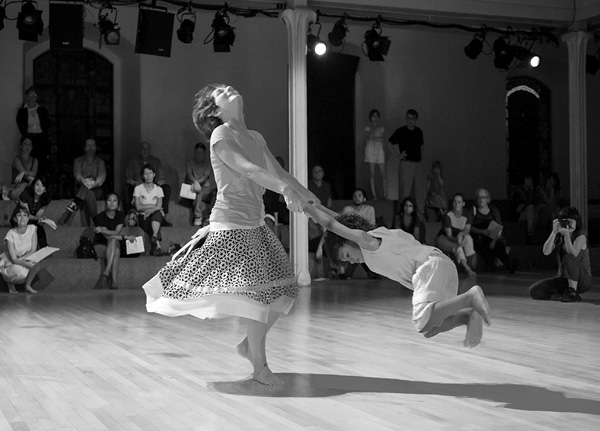
40 DANCERS DO 40 DANCES FOR THE DANCERS
first performed on September 13-15, 2012
Danspace Project, St. Mark’s Church-in-the-Bowery, New York, NY
performed once in 2012
CLARINDA MAC LOW, JACKSON MAC LOW AND THE 40 DANCERS
Luciana Achugar, Ignacio Achugar-Granoff, Anna Azraeli, Ezra Holzman, Linda Austin, Lydia Bell, Paul Benney, Lise Brenner, Chris Cochrane, Simone Forti, Levi Gonzalez, Carolyn Hall, James Hannaham, Patricia Hoffbauer, K.J. Holmes, Janusz Jaworski, Sarah East Johnson, Andrea Kleine, Abigail Levine, Mordecai-Mark, Susan Mac Low, Ej, Lyla, Jane Mcadams, Jennifer Miller, Leyna Papach, Masumi Kouakou, Bobby Previte and many others
New York, NY
631630323c631630323l631630323a631630323r631630323i631630323n631630323d631630323a631630323.631630323m631630323a631630323c631630323l631630323o631630323w631630323@631630323g631630323m631630323a631630323i631630323l631630323.631630323c631630323o631630323m
clarindamaclow.com
40 DANCERS DO 40 DANCES FOR THE DANCERS
CLARINDA MAC LOW, JACKSON MAC LOW AND THE 40 DANCERS
CLARINDA MAC LOW
“40 Dancers” brought together an eclectic group of colleagues to construct performances based on The Pronouns: A Collection of 40 Dances for the Dancers, a book of performance instruction poems written, through a series of chance procedures, by my father, poet/composer/multimedia artist Jackson Mac Low. “40 Dancers” was a social experiment that used The Pronouns to investigate how art-making forms communities and families. It was also a celebration of Jackson’s 90th birthday, a love letter to my dance community and a recreation of a child’s-eye view of the 1970s New York “avant-garde” arts world. When I was a child, all the artists around me worked together, often mixing artistic disciplines promiscuously and bringing the kids to work. I have followed this path in many ways. The piece was also my artist’s autobiography through the prism of everybody I’ve collaborated with and been influenced by—the 40 “dancers” were selected from all parts of my artistic life over the past 25 years.
To begin making “40 Dancers,” a copy of The Pronouns was distributed to all the participants. They were asked to pick the poems that resonated. People who picked the same poems worked on interpreting those dances together. A programmer created an algorithm that distributed all 40 poems across the three nights of performances, using a methodology similar to the one used to create the poems. Schedule conflicts, childcare and other life circumstances provided a further randomizer. The structure of the piece was a combination of all these factors. Though the performances took place on three distinct evenings, the piece took place over the course of the three nights and none of the nights were alike.
In “40 Dancers,” I combined a decade of creating situations where social relationships are essential art materials with my long experience as a dance-maker and performing artist. In this meta-performance, the entire process of the artwork was privileged. The resulting piece was not so much an aesthetic product as an esthetic by-product of a social situation, where the provisional community formed by a shared project was as important as the performance itself.
During the year of 2012, I have been working as an anthropologist in the dance community. This includes fieldwork (making dances), case studies (one-on-one meetings with creative partners and audience members) and data visualization. Now that “40 Dancers,” the culminating “field-work” performance is over, I am “performing” further research and data analysis.